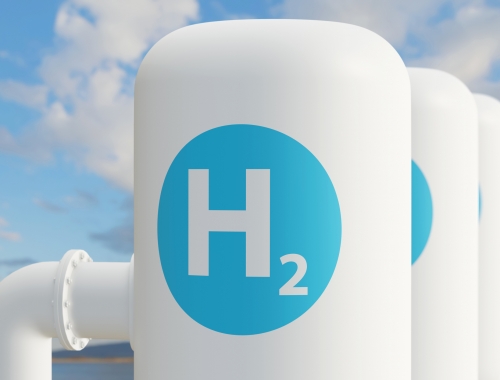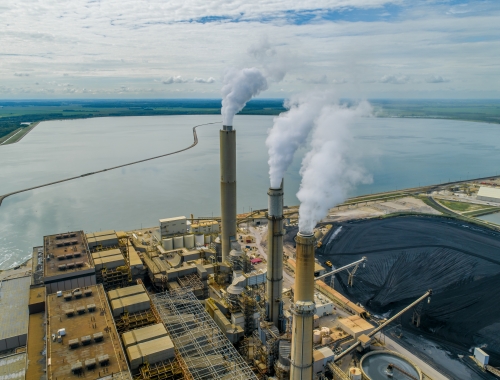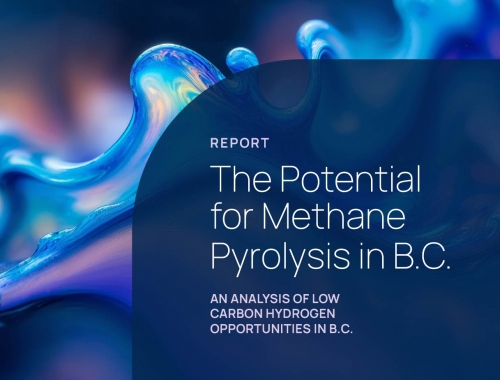The boys of summer
SUMMARY
Tourmaline plays Moneyball with emissions reductions plan. [Images: Tourmaline Oil]
By Shaun PolczerPOSTED IN:
It’s a well-known secret that Tourmaline Oil CEO Mike Rose is a HUGE baseball fan. So much so that it permeates the company’s corporate culture, especially with respect to its emissions reduction strategy, which can be summed up in one word – Moneyball.
For the uninitiated, Moneyball is a 2011 motion picture based on the book by author Michael Lewis entitled “Moneyball: The Art of Winning an Unfair Game”. It stars Brad Pitt as Oakland Athletics manager Billy Beane, who takes a struggling major league franchise to the American League championship with a simple philosophy of hitting singles and doubles rather than home runs using a “sabermetric” approach to analysing disparate data streams and statistics – baseball is rife with them – to solve the specific, universal problem of the game. Namely, getting on base.
The critically acclaimed film earned six Academy Award nominations and is widely considered to be one of the greatest baseball films of all time. It is an apt metaphor for the efforts of Canada’s largest natural gas producer to reduce its emissions footprint while it strives to reduce its emissions through a suite of new technologies.
Scott Volk, Tourmaline’s technology and innovation lead, is a fan of the sabermetric premise and agrees that it neatly sums up the company’s greenhouse gas (GHG) strategy. “The things that make the difference are the singles and doubles and getting around the bases,” he says. “And I’d say we were already good at hitting those singles and doubles but you still need to get the home runs…that’s our policy in a nutshell.”
In the movie, Beane is often criticised for his approach, which reduces the romance of America’s Pastime to a numbers game that is inherently coldly calculated and indeed, boring. Likewise, Tourmaline’s efforts are decidedly unglamorous for non-engineers: waste heat recovery; zero-emission well sites; detection and monitoring; diesel displacement; methane monitoring. Each in itself represents a small incremental step to attaining a lower carbon footprint.
Playing the outfield
And like Beane’s assistant manager Peter Brand – played by Oscar-nominated Jonah Hill in the movie – Volk can rattle off a seemingly endless stream of facts and statistics to support the basic hypothesis that small incremental gains add up to hard earned runs.
In its 2020 corporate sustainability report, Tourmaline touts a 31% reduction in CO2 emissions intensity since 2013 despite a 289% increase in production; the elimination of 212,000 metric tons of CO2 equivalent (CO2e) methane emissions per year; 95% water recycling in completion operations; a target of eliminating all fresh water from well stimulation activities in northeast British Columbia; and displacement of 20mn litres of diesel fuel per year using hybrid drilling rigs and onsite natural gas generators to generate electricity.
Methane is another special case that warrants its own category. Although most attention is given to CO2, methane is 25 times more potent than CO2 over a 100-year life cycle. Tourmaline is targeting a further 25% reduction in overall methane emissions by 2023 using a combination of onsite detection technology to mitigate and repair leaks, the installation of zero-bleed valves and electrical controls and the implementation of hybrid power solutions in remote areas to capture those emissions and generate electricity.
A lower carbon profile can also be achieved by something as simple as avoiding methane emissions completely by changing where and when it performs flow-meter testing of wells and replacing pneumatic pumps driven by compressed natural gas with electric or air-driven units. In the future it plans to expand the use of drones, infrared cameras and even satellites to detect leaks. By its own account, Tourmaline achieved its own corporate methane emissions reduction goal three years early.
According to Colin Frostad, the company’s vice-president of exploration, drilling multiple wells from single pads further reduces emissions by avoiding duplication of facilities and associated equipment. Consolidating drilling sites results in some 50% less land disturbance which in turn reduces indirect impacts on land, air and water. “We’re very much focused on shorter term goals we can achieve, rather than swinging for the fences. And we’re very good at slapping singles.”
In that respect, Tourmaline has partnered with drilling contractor Precision Drilling and heavy equipment manufacturer Caterpillar to develop a mobile natural gas generator and energy storage system for electric-powered drilling rigs (Volk compares them to a Prius). The technology uses clean-burning natural gas and a smart energy management system which stores electricity that would otherwise be wasted, reducing GHG emissions and lowering power-generation costs.
Looking ahead, diesel displacement initiatives include optimising and scaling rig technology into the fleet and decarbonising completions technologies. The goal is to have the entire completions and stimulation program powered by the company’s own natural gas. It further aims to reduce emissions by using gas to power remote electric pumps and water operations. “Those are a lot of the short-term single base hits,” Frostad quips, playing to the theme. “And those are in very short order, just in the last five innings (years).”
Together they read like a box score in the sports pages. Although each can be considered in isolation, they are nonetheless essential to the final result. “It’s like every other part of our business,” Volk adds. “It’s a continuous improvement model.”
Rounding the bases
Combined, those continuous improvements amount to Tourmaline’s “four pillars” strategy: governance; strategy; risk management; and metrics and targets. Like the bases in baseball, each is an incremental step to reaching home plate that goes beyond basic emissions reduction and reaches into all aspects of the company’s ground game.
Like any sports franchise, the home team also needs a strong front office. Beyond its operations in the field, Tourmaline has shifted efforts to its bench and bullpen with respect to how it discloses emissions reductions and quantifies their impact on its risk management practices. The company incorporates the Global Reporting Initiative (GRI) standards when developing a report as a baseline for the sustainability factors relevant to its various stakeholders, including investors as well as government reporting agencies.
Again, sabermetrics is an apt term to describe those efforts. For the first time in its sustainability reporting, the company has included a section on meeting recommendations from the Task Force on Climate-Related Financial Disclosures (TCFD), and incorporated discussion points and metrics outlined by the Sustainability Accounting Standards Board (SASB). The specific sustainable industry classification system is technically defined as “SASB EM-EP – Oil & Gas Exploration and Production – and is widely expected to become a standard for disclosure of emissions and various offsets. It’s a question of when, not if, they will eventually become industry standards.
In turn the company has established its own cross-discipline ESG team to monitor and manage environment-related risks and all ESG issues. The committee meets regularly to discuss key topics and provide recommendations to management and the company’s board of directors.
The company says it has incorporated escalating carbon prices in future scenario analysis taking into account International Energy Agency (IEA) scenarios, including Current Policies, the group’s so-called ‘Stated Policies and Sustainable Development’ for global natural gas demand and global oil development. These are constantly reviewed and refined in its ongoing scenario analyses. “We intend to disclose more detailed information in future reports,” it states.
As a part of the process, Tourmaline simulates various scenarios by incorporating emissions regulations and expected costs into the current and future economic evaluation of planned development projects. Not coincidentally, all of Tourmaline’s operations are in jurisdictions that have federal and provincial carbon pricing (namely, Alberta and British Columbia), which could almost be construed as a salary cap in sporting terms. Indeed, the overarching theme of Moneyball was how to field a competitive roster under serious financial constraints.
At the end of the day, Volk agrees an investment in emissions reduction is an investment in increased efficiency, which represents “a real value proposition, a real value as opposed to a ‘feel good’ value…to me that’s a real value proposition.” Volk was partly responding to the release of a government discussion paper released on July 18 by federal environment minister Steven Guilbeault on how to best reduce oil and gas sector emissions 40% by the end of the decade. Without commenting directly on the specific proposals, “killing supply to influence demand is, in my opinion, just reckless policy,” he added.
Al Bush, Tourmaline’s chief operating officer, is a bit more diplomatic. A growing part of his role is to convince various decision makers that small incremental gains are not only good business sense but make for good policy. “I spend a lot of time talking to government these days,” he quips. “I’m more focused on the upfront end of the business.” In addition to sound environmental practice, he describes the company’s diesel displacement program as an example of cost efficiency driving innovation.
“There’s a recognition that we don’t have to hit it out of the park with everything we do,” he said. “But if you hit a triple you still have to bring them in.”
Swinging for the fences
But sustainability, by definition, extends beyond the immediate term. That’s why Tourmaline is adopting a series of company and industry-specific initiatives designed to build on its accomplishments to date and further extend technological innovation and development.
Starting in 2018, Tourmaline has been an active participant and investor in the Canadian Gas Association’s Natural Gas Innovation Fund (NGIF), an industry-led organisation funding clean-tech innovation throughout the natural gas value chain. The fund’s investments support startup companies as they develop technologies from drill bit to burner tip. The company has invested nearly C$19.3mn (US$14.91mn) to fund 14 clean-tech startups to spur new emissions reduction technology, any one of which could be a future silver bullet. “It’s hard to get your head around where the industry is going to be in 10 years when you look back at where it was 10 years ago,” says Bush. “The technology is only going to grow, it’s remarkable where it’s going in every respect.”
In addition, Tourmaline has partnered with the NGIF, Natural Resources Canada, the University of Calgary, and Perpetual Energy to launch the NGIF Emissions Testing Centre (ETC), a first-of-its kind initiative at the Tourmaline/Perpetual Wolf Creek gas processing plant near Edson, Alberta where those startups can now perform live emissions testing and field-demonstrate their technologies.

Tourmaline says the ETC operational site provides the ability to test and validate multiple emissions measurement and reduction technologies, allowing for better understanding and qualification of emission-source points and verification of quantification methods. In addition to working with the Tourmaline staff, the startup companies also receive support from University of Calgary personnel to test and refine their work, as well as analyse field data. Ultimately, the NGIF ETC platform is designed to help companies move their clean technologies from early-stage development to commercial readiness.
Volk describes it as “building blocks for the future…singles and doubles get us on the scoreboard but we’re also training the next generation of home run hitters.”
Second in a continuing series featuring the work of Gas Pathways Platform participants in advancing natural gas innovation.








